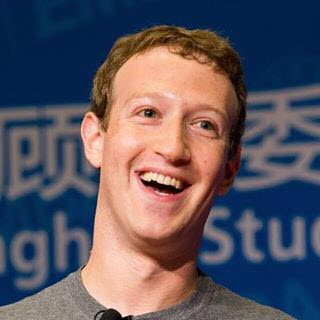The recent F8, Facebook Developer’s Conference, held in San Jose gave us a lot to chew on. At developer’s conferences, we usually expect to get a glimpse of the company’s near future ideas. Facebook always talks about its 10-year plan, but this year’s Facebook Developer Conference was quite different. This year Mark Zuckerberg, president and CEO of Facebook, laid a new direction and some major plans for the company.

Zuckerberg is on the cutting edge of several new technologies. He expects to see people “type with their brains and hear with their skin.” To that end, Facebook is working on an extremely ambitious project that has been dubbed “Building 8.” Regina Dugan who previously headed up Darpa, said in a Facebook post “Over the next two years, we will be building systems that demonstrate the capability to type at 100 [words per minute] by decoding neural activity devoted to speech.” They are also working on turning a few square meters of skin on the human body into an artificial cochlea.

More immediate in Facebook’s future is Zuckerberg’s ultimate aim. He wants to change Facebook into a thriving community where people will find a sense of purpose. His road map for building this new Facebook community is based on another new technology called augmented reality. He feels that the text is shriveling and dying. Photos and videos have become central in today’s digital world. So allowing Facebook’s nearly two billion users to use their cameras to shift towards a more visual form of communication is the next logical step. Zuckerberg is betting that his followers are ready to use augmented reality to enhance and interact with their physical world.
To that end, Facebook has already implemented a new interface for its apps. Facebook has added Camera icons to its suite of consumer apps including Facebook, Instagram, WhatsApp, and Messenger. These are geared toward encouraging people to take and send photos and videos.
At this annual developer conference, Zuckerberg also announced a new platform called Camera Effects. He called for programmers to start building augmented-reality apps for this platform and announced the start of Beta testing.
As you probably know, augmented reality efforts have flopped in the past. The most prominent failure was that of Google’s highly-promoted Google Glass. Also, after two years Microsoft’s Hololens project has not yet produced a finished product.
In 2014 Facebook spent 2 billion dollars on the purchase of Oculus, a leading player in the virtual reality arena. Mr. Zuckerberg has acknowledged that sales of virtual reality gear have been disappointing. However, he says that this purchase helped his company in its augmented reality quest.
Zuckerberg presented several demonstrations of complex technologies like Simultaneous Localization & Mapping (SLAM) which are needed for the precision of augmented reality. These demos showed off several technologies that Facebook is currently been working on.
Spurred on by the Pokémon Go augmented reality game that became a global hit last year, Zuckerberg expects augmented reality to be not just a game, but a part of our everyday lives. This new reality will allow us to overlay digital objects with the real world. This will not only extend the physical world but will mix the digital and physical worlds in all new ways. Zuckerberg expects that some things will no longer have to be digital. Why pay 500 for television when a 1dollar app will project the television show or movie right on your living room wall? He mused that one-day household objects could be completely replaced by software.
He also expects that augmented reality will be useful in many different applications for displaying information. Why should you stand in front of the Taj Mahal looking at a travel book when the information from that book can be projected right on the wall in front of you?
On the other hand, imagine using augmented reality to create immersive ads and marketing campaigns, fulfilling the dream of all brands worldwide: full customer engagement and deep emotional connection with the customer. It is one thing to create Facebook ad and have a client see an image or a video and a whole other to conceive AR universes where people can interact with products and the brand themselves.
Zuckerberg also expects that the location addressing augmented reality will become so advanced that you will be able to leave a note for your friends right on the menu board at a restaurant advising them of their best choices from that menu. Certainly adding digital objects and enhancing physical objects will have many applications in the future.
In the quest to make the camera the first augmented reality platform, Facebook is launching additional features for their camera app. This will include filters and effects, face maps, art frames, and face features. Hopefully, this is only the beginning. Facebook is working with companies like Electronic Arts, Nike, and Warner Brothers to add augmented reality experiences to this new Facebook platform.
While these initial partners are sure to produce some great augmented reality apps, it will take a lot more developers to make Zuckerberg’s dream a reality. Amazon did it by creating the Alexa Fund which provided venture capital funding of 100 million to fuel voice technology innovations for developers. We’ll be watching to see how Facebook can spur the development they need to make Zuckerberg’s dream a reality.
Zuckerberg has set out an extremely ambitious plan for the future of Facebook.
Note:
Just hours before the Facebook Developer’s Conference began, Snapchat, Facebook’s major competitor in this arena, announced its new latest feature. Snapchat will have 3-D lenses for use inside their apps. This is similar to some of the things that Zuckerberg talked about. With competition like this, you can expect augmented reality to move quickly.

Leave a Reply